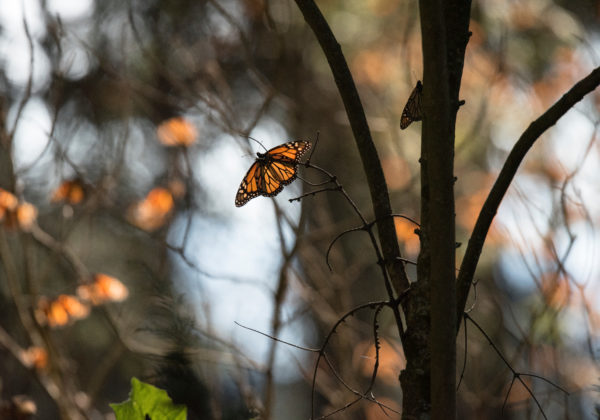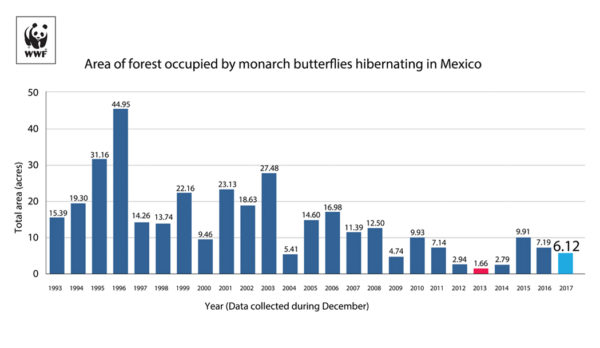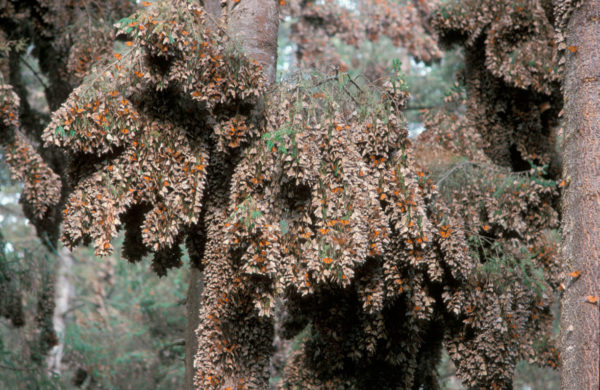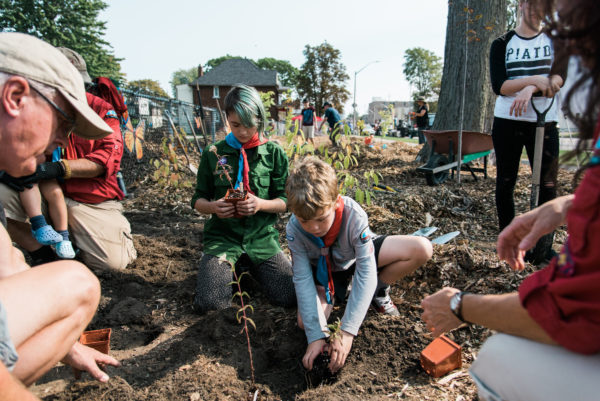New troubles for monarchs and how you can help
Though monarch butterflies danced across Canadian skies last fall, a new survey released by WWF indicates monarch populations are continuing to decline.
Each fall monarchs set out on a 5,000-kilometre journey to their wintering sites in the mountain forests of Mexico, where they cluster together from late October through March. The area of forest covered by the endangered butterfly is used by scientists to track monarch populations.
The survey, conducted at the Monarch Butterfly Biosphere Reserve in Mexico by WWF, in co-ordination with Mexico’s National Commission for Protected Areas, found that monarch butterflies occupied almost 15 per cent less forest than in December 2016.
Download the full report from WWF-Mexico (available in Spanish)
This decline is part of a bigger and worrisome downward trend.
During the past two decades, WWF has seen a dramatic and sustained decrease of the area occupied by monarchs on their wintering grounds, from almost 18.2 hectares of forest at their peak in 1996 to just 2.5 hectares in 2017.
Monarchs are threatened by deforestation of wintering forests in Mexico, disruptions to their migration caused by climate change, and the loss of native plants along their migratory corridors. Researchers say that the historic hurricane season and warmer than usual weather, which delayed migration in some parts of Canada and the United States, may have also contributed to reduced numbers in 2017.
In Canada, the monarch has been recommended for listing as Endangered under the Species at Risk Act.
Saving monarch migration
With the longest migration of any insect in the world, there are many places where monarchs can become vulnerable. That’s why WWF is working across the monarch’s epic migration route to conserve its habitat — in Canada and the United States where monarchs breed and spend their summers, as well as in Mexico where they spend the winter.
Here in Canada, we’re supporting individuals, schools and communities to restore pollinator habitat through programs such as Go Wild School Grants, Go Wild Community Grants and In the Zone, a native plant gardening program for residents in southern Ontario’s threatened Carolinian zone. More than 55 community and school projects, along with gardeners, are helping the monarch.
What you can do to help
Monarchs are beginning to cross the continent again, instinctively following the sunshine and spring flowering. The great grandchildren of those that took flight to Mexico last fall are expected to arrive in southern Canada from late May to June. There are a few things you can do right now to help:
- Grow milkweed, the only food monarch caterpillars eat.
- Plant pollinator-friendly plants. The more native habitat we restore in our own neighbourhoods, the fewer habitat gaps there will be for migrating monarchs.
- Donate now
This blog has been updated since its original publication.





